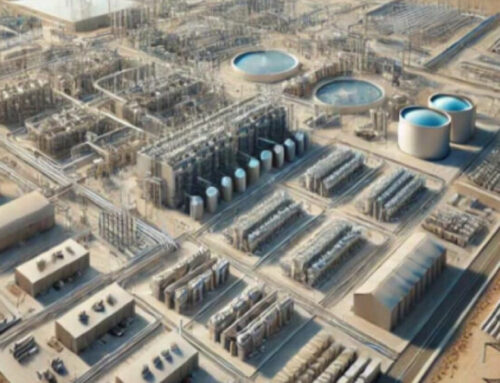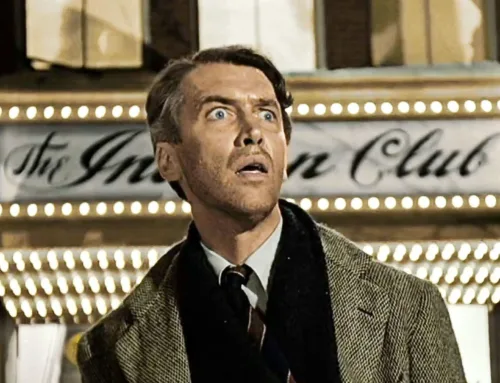L.A.’s Wildfire Problem Isn’t Going Away
January 14, 2025
Michael Gollner studies fire and how it behaves at UC Berkeley’s Fire Research Lab. His research is focused on fires that spread from wildlands to urban areas––work that gives him insights into the fires ravaging Pacific Palisades, Altadena, and other areas near Los Angeles. On Friday, I interviewed him about the fires and how to rebuild the communities they’ve destroyed in a way that makes them more resilient. What follows is an edited version of our conversation.
Conor Friedersdorf: How relevant is the debate about how to manage forests––whether to thin them out, for example––to fires like the ones in greater Los Angeles that began in dry sagebrush and chaparral?
Michael Gollner: When extreme wind events occur, one variable is how much fuel is around to burn. Southern California had a lot of rain in the past couple of years, which caused a lot of plant growth, but no rain so far this winter, so that fuel was dry. We’re not talking about big trees burning in a forest. This was mostly little leaves and twigs, things less than a quarter-inch thick, so they get dry pretty quick. I’m not a fire ecologist, but in my observation of fire ecology, I think there’s still some debate on the best way to handle prescribed-burning regimes and fuel management in chaparral ecosystems. What I like to emphasize is: What happens when that fire gets to a community?
To improve protection, we’re not talking about clearing whole forests or bulldozing hills. We’re talking about just hundreds of feet out from the community. We’re talking about giving space between the fire and the community and then making it so that the only thing that can get through is embers.
Embers are little burning particles that are smoldering almost like charcoal when it is not making a flame but is red and glowing. They can loft up in the air and get carried by the wind—some firefighters reported seeing those embers lighting fires two to three miles ahead of the main flame front. You want to harden the community so that those embers are unlikely to light new fires.
Friedersdorf: Even knowing that embers start new fires, a part of me can’t comprehend it: I think of struggling to light a campfire even while holding a constant open flame against firewood.
Where is my intuition going astray?
Gollner: It’s partly a matter of scale and probabilities. Any individual ember is unlikely to start a new fire. But a wildfire produces millions of embers. You can see them flying everywhere. One that catches is enough.
And you don’t see an ember land on a big flat surface, like a piece of plywood, and set it on fire. It rolls away. But where? In wind, embers tend to pile up together in one place, like between the boards of a deck, or in crevices at the base of a wall, in front of siding. They can get in nooks and crannies on the roof and pile up there, or if you have a vent, they can fly in through it and land on flammable material. A mulch pile can be a perfect cavity, where an ember or embers settle in a little one-inch area that is protected from the wind enough to smolder and ignite. That’s not something you can model at scale, but you can re-create it in a laboratory.

Friedersdorf: What should homeowners understand about the science of how best to protect their homes?
Gollner: There’s never going to be 100 percent protection. But a shift in preparation can make a big difference, especially a community-wide shift. Firefighters can then have the upper hand and catch those fires that slip through the cracks. I’ve watched the videos of Pacific Palisades and elsewhere. In many places, vegetation management was not taking place. It’s hard to assign fault, because it’s a mix of private, city, county, and state property. But there was lots of brush, trees over structures, people who put juniper bushes next to their house, all in areas we’ve long known to be high-hazard. It’s devastating that it occurred in this way. We never expected it all to come together at once on any particular day. But we knew something like this could happen.
Think of having a defensible space around the home. You don’t want any material there that can catch fire and spread to your house, especially in the five feet around the base of the structure.
And then you want to harden the house against embers. Shake roofs are the absolute worst. The 1991 Tunnel Fire in Oakland Hills raced through wooden cedar-shake roofs, but those aren’t so common anymore. Now it’s flammable siding, flammable decks, open vents without mesh to protect against embers.
And it’s tempting to think, I did my roof, I did my siding, and I did my vents. But I really love that juniper outside of my window. Well, if that juniper catches on fire, it is going to produce 15-foot-tall flames. It does not matter how strong your windows are; that’s going to shatter them and spread inside.
There is a story from a former fire chief about a house that was built mostly of glass and steel. It was super well defended against embers. Except it had an opening to an interior courtyard where they could land. An ember probably lit a planter on fire, which then probably shattered the glass and moved inside. Otherwise it would have been safe. But they had an opening that kind of let it in. You can build a whole concrete structure and then leave your window open, and it’s lost. So I don’t think the solution is to rebuild everything out of steel or concrete or mud, but rather to thoughtfully build and make sure you have the thought process of sealing the outside of your house from embers and keeping space around it free of flammable materials.

Friedersdorf: And hope that your neighbors do the same?
Gollner: Yes. You can completely protect your house from embers, and then if you’re close to your neighbor who hasn’t done anything, and their house catches fire, those flames will be so huge, there’s just nothing you can do. You need the whole community to start making changes. If everyone’s making a lot of changes, even short of perfection, you start to see bigger impacts. Still, even if you’re the only one hardening your house, there can be benefits, depending on the fire. For example, over time, more firefighters arrive at the scene of a fire in a given area. When deciding where to focus, firefighters will probably pick houses that seem most defensible, which gives you a better chance. You want to be the house that they feel safe defending, not the house down a long drive surrounded by juniper trees where they feel unsafe.
If you and all your neighbors harden your homes, it’s harder for embers to start and spread fires, and the fire department can put out the isolated fires and save the community. But yes, once embers get into a community and set one house on fire, that fire can jump to the house of the neighbors. Fire spreads fast through vegetation, and slows down when it gets to houses. But houses burn really intensely and for a very long time. The fire dynamics completely change. You see just how much water firefighters are trying to use on house fires. Burning at that intensity, water doesn’t have much impact. So you want some space between your house and your neighbor: 30 feet is an estimate that we’re trying to refine with current experiments.
Friedersdorf: So in Pacific Palisades, where the entire community burned, it’s unlikely that one home, having been diligently hardened, would have survived, whereas if the whole neighborhood had been hardened against fire, there might have been a different outcome?
Gollner: Right.
Friedersdorf: In communities that have largely or totally burned to the ground, and so have the opportunity to make changes at scale when rebuilding, what changes pass the cost-benefit test?
Gollner: There’s some discussion of trying to move around the footprint of where we build different things. And often that’s near-impossible because people own that land and they’re going to rebuild.
California does have fairly good fire-prevention measures and requirements in its building codes. One of the most important things is to make sure that those are enforced in rebuilding. Make sure that structures are up to code and hard to ignite, and that yards have defensible space and aren’t going to become infernos.
One hopes that if you do that at scale, you can discount some of the design aspects of building resilience into properties and landscaping, so that it’s cheaper for everyone. We’ve seen things like wooden fences spread fire. And so in the five feet next to the house, use metal or a nonflammable material or change the entire fence. There’s a lot of ways that you can make changes. And because of the wealth in Pacific Palisades, I could imagine it becoming a model for rebuilding resiliently. Hopefully this can become an area where, in a future wildfire, people evacuate and no houses burn down, or one house burns without spreading.

Friedersdorf: I notice that whereas the public seems focused on city officials better responding to house fires once they start, you’re mostly focused on better preempting house fires from starting.
Gollner: We are never going to stop wildfires driven by extreme winds. But we can prevent large-scale disasters if we understand that almost everything you can do to avoid the worst outcomes must take place long before that first spark. It’s about the way we design our communities, the vegetation around them, the buildings and the way you prepare for the first response, so that you can very quickly identify a fire when it’s so small that a water drop from a plane can put it out, especially if the weather is favorable. Once the fire is large, it’s almost impossible to do anything.
Of course you want to answer questions, like Did the water pressure fail in Los Angeles? and Was the fire department appropriately funded? Investigations may reveal mistakes or a need for reforms.
But when assigning blame, remember, Pacific Palisades was designed 50 to 100 years ago, in a really high-fire-risk area where people built homes without consideration of wildfires. There were mistakes made, mistakes like the difficulty of evacuating, long before we fully recognized that they were going to be mistakes. We’ve allowed them to stand and failed to make commonsense changes. And everyone involved in many decades of decisions is partially responsible.
Friedersdorf: How do you study something as chaotic and variable as wildfires spreading into communities?
Gollner: One thing we do is modeling. There’s been a big development there: We took models of how wildfires spread through vegetation and expanded them to include how those fires spread into urban areas: how embers get into communities, how different structures burn, how fires hopscotch between homes and vegetation.
We also do experiments. We go to the Missoula Fire Lab a lot to better understand wildfires. And we go to the Insurance Institute for Business & Home Safety, where they burn tiny houses, or ADUs, in a six-story-tall wind tunnel. We measure heat fluxes. We study how far structures need to be spaced from one another. We collect the smoke to understand what’s in it. We ask questions: How do embers ignite different materials, like mulch or siding or wood? There are still a lot of aspects of how fire spreads that we could understand much better.
More Stories
The Particular Horror of the Los Angeles Wildfires
A Retiring Congressman’s Advice to New Members of the House
Search
RECENT PRESS RELEASES
Related Post





